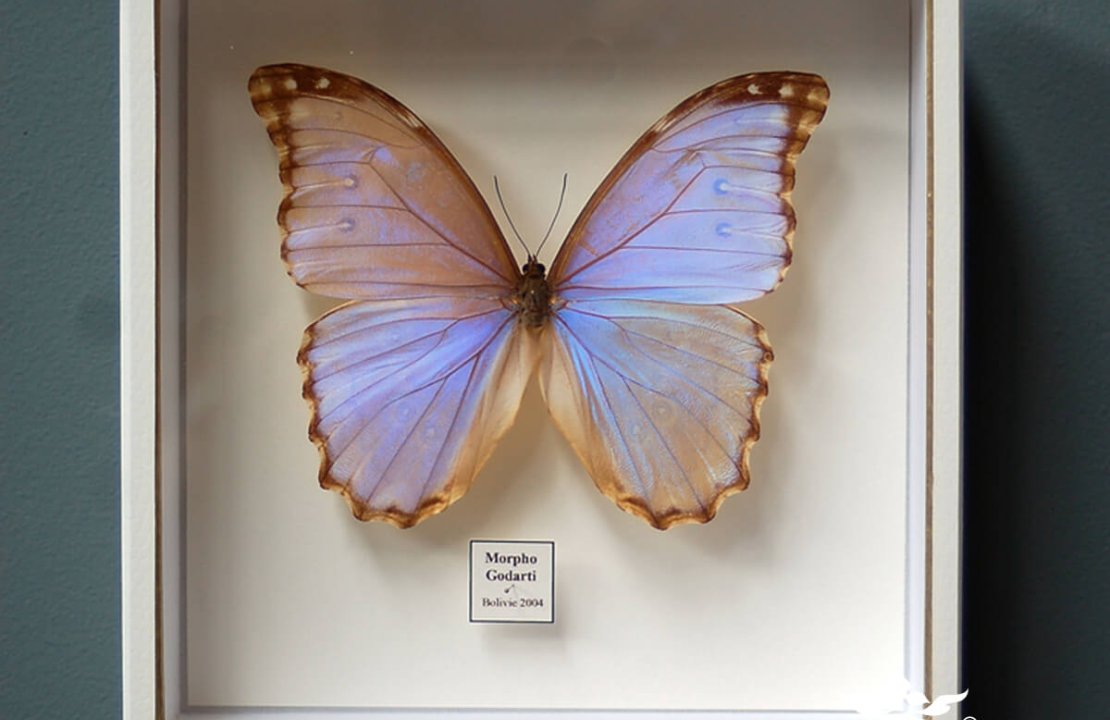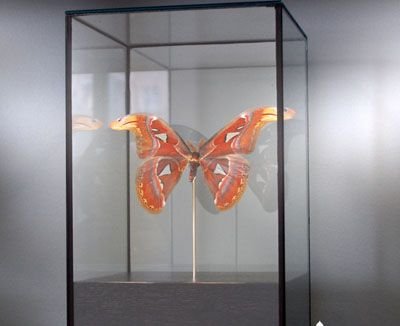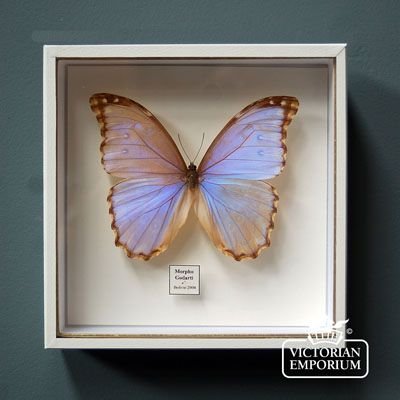How do I catch a butterfly?
You need to know where to find butterflies - they can usually be found near large patches of flowers and weeds. Gardens, parks, fields with flowers as well as crops are all good butterfly hunting grounds during the spring and summer months.
Wait for the butterfly to land - or if you are close enough, try a gentle horizontal side-swipe with a butterfly net. Go gently so as not to frighten them away. Be careful not to hit the butterfly with the edge of the net as a damaged butterfly will be of no use to you for a display case.
Left to thrash around in a net or killing jar, butterflies often damage themselves, ruining the specimen. So it's best to immobilise the insect immediately after you catch it. Through the cloth of the insect net, grasp the body of the butterfly with wings up. Squeeze the sides of the thorax quite hard with the thumb and forefinger for 2 to 3 seconds. This paralyses the butterfly temporarily so the net can be opened and the specimen lifted out without danger of damage or escape. Do not apply so much pressure that you squash the butterfly.
Try not to touch the wings of butterfly with your fingers as the scales which provide their rich colourings and patterns rub off very easily when handled.
Insects collected near home should be killed by transferring them to small bottles or boxes and placing them in a freezer for 1 to 3 hours. Insects may be stored in a freezer for relatively long periods without them drying out or decomposing if you are not ready to mount them immediately.
A killing jar also may be used for killing collected insects. To make a killing jar at home, use a heavy glass jar with a large mouth and a screw cap. Pour 1 inch of wet plaster of Paris into the bottom of the jar, let it harden, then thoroughly dry the jar in a moderate oven. After removing it from the oven, saturate the dry plaster of Paris with ethyl acetate and pour off any excess liquid that does not immediately soak in. Put the screw cap on the jar. The jar is now ready for use. Keep the jar tightly capped when not in use to extend the effectiveness of the ethyl acetate. When the jar loses its killing strength, dry it out and re-saturate it with the ethyl acetate.
Always keep a piece of tissue in each jar to absorb moisture and keep the specimens from being damaged.
Butterflies are best mounted within a few hours of being caught. Leave the specimen in the jar for the least time you need to to ensure they are fully dead. If left in the jar for too long, the butterfly becomes too soft; and those butterflies taken out of the jar but not pinned quickly enough become too brittle to handle.
How do I mount the butterfly?
If you are not mounting your butterfly within a few hours of death, you need to relax the specimen. Boil a kettle of water and use a small airtight container such as a jar or plastic box that has been sterilised in boiling water and dried. When the container is dry, line the bottom with a piece of kitchen roll or some other absorbent material. Add enough boiled water to moisten the towel. Now add a few drops of a disinfectant such as Dettol, to prevent mould forming. Place the specimen into the container and let it sit for a day or two. When the butterfly is pliable set it. Setting a butterfly is the procedure use to flatten the butterfly so that the wings can be displayed. You need to use setting board which can be made from thick cork tiles. Two cork tiles, of appropriate size, are placed side-by-side on a baseboard. Leave a space between the tiles wide enough to fit the width of the butterfly's body. Using an insect pin, attach the butterfly to the baseboard over the space between the tiles. Make sure that the wings are resting flat on the two cork tiles. Adjust the position of the wings to best display the beauty of the creature. Using two strips of paper for each wing, hold the wings flat against the board with insect pins. Be careful not to pin through the wings. After the insect has been set, leave it in a dry, warm area for three to four weeks. After that time, the butterfly is dry and ready to mount.
Mount the butterfly: when it's dried out, carefully remove the paper strips. Use an insect pin through the thorax to mount the butterfly permanently in a butterfly display case. Make sure the case is tightly sealed and include some mothballs to prevent damage from beetle larva in the display case.
The Victorian Emporium sells a wide range of Victorian style ornaments including Butterfly Display Cases



Be the first to add a comment...